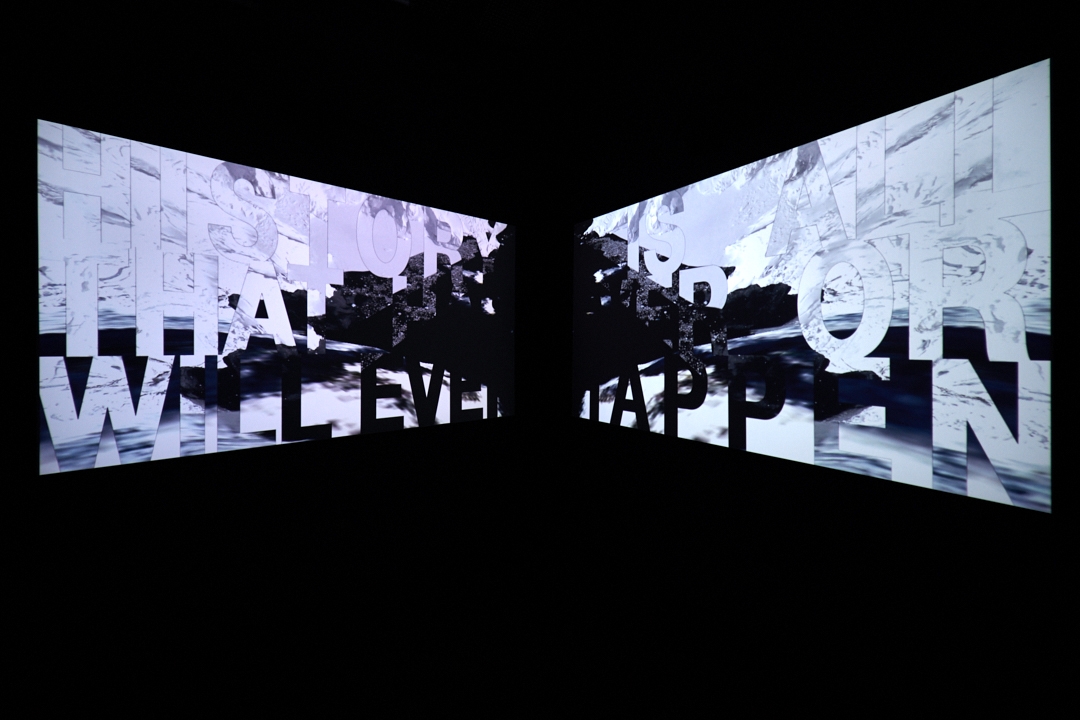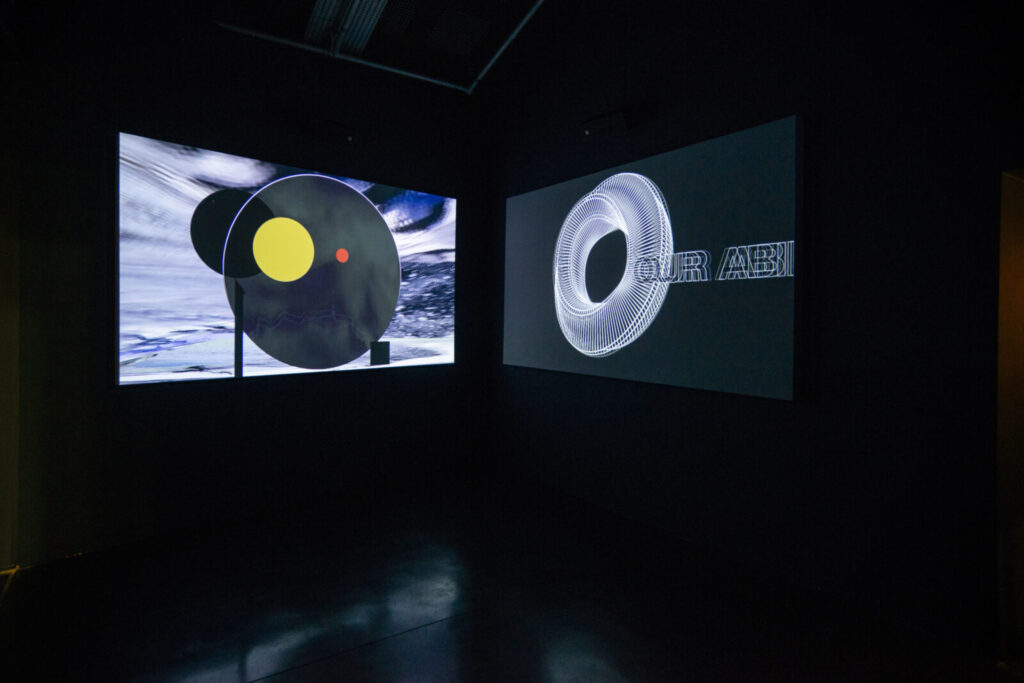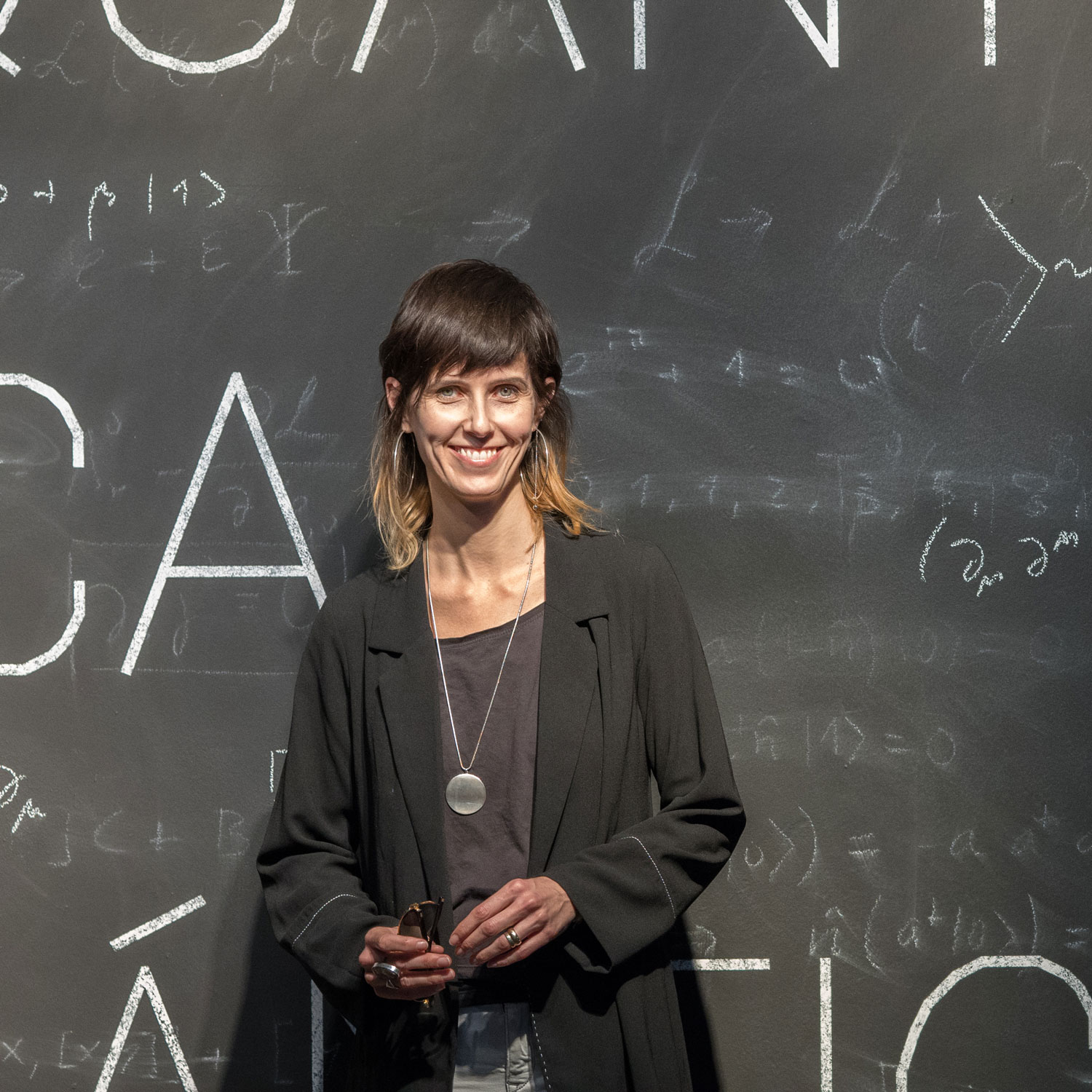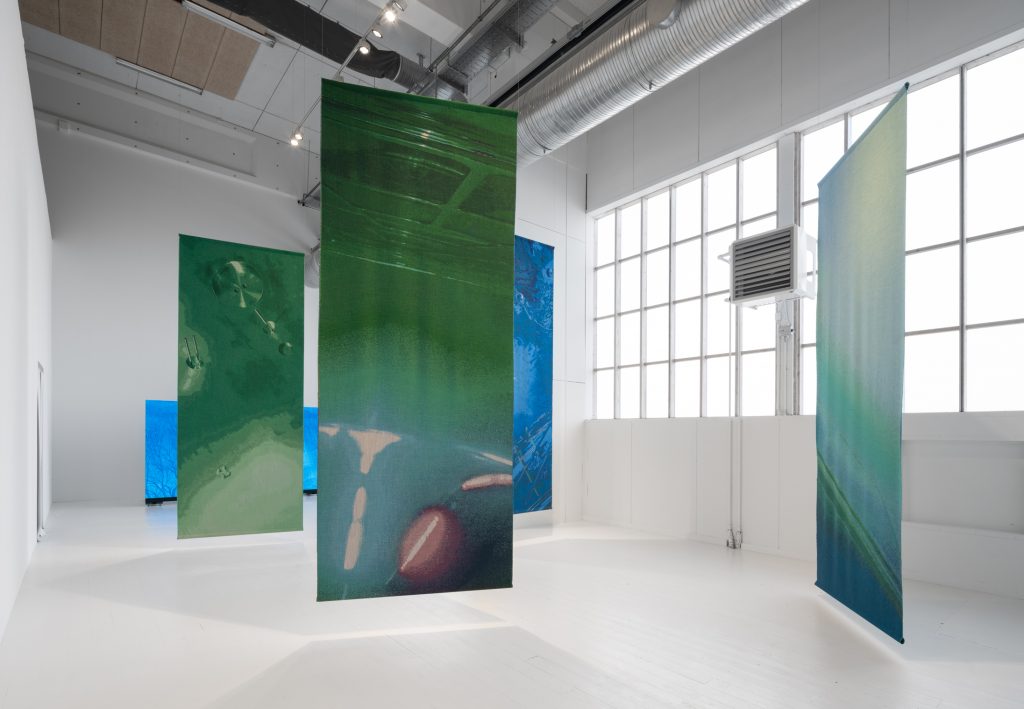- Artist
- Diann Bauer
- Year
- 2018
- Medium
- Two-channel HD video with quadraphonic sound (6"40')
- Artistic Residency
- Collide

Scalar Oscillation examines the significance of the extremes of time and scale operating in much of modern physics
Albert Einstein’s general theory of relativity, published in 1915, proposed that time does not pass identically for everyone. An example of this would be the varied speed of time’s passage for people living at different altitudes. The difference is too small to be perceived, but it can be measured with enough precise clocks.
Scalar Oscillation explores the significance of the extremes of time and scale operating in much modern physics. In this two-screen video installation, Diann Bauer, in collaboration with composer Seth Ayyaz, explores the difference between the complex features of time as they are understood in physics and temporality—or the more everyday experience of time’s passage.
The discrepancy between time and temporality is a fundamental example of the gulf between the realities of the material world and how that world appears to us. Through an onslaught of image, text, and sound, this work confronts us with the limits of our capacities to assimilate information. Bauer’s script draws on a range of sources, including physicist Carlo Rovelli, theorist Suhail Malik, and Russian Cosmist Nikolai Fyodorov.








